Focusing 2020 on Protests for George Floyd
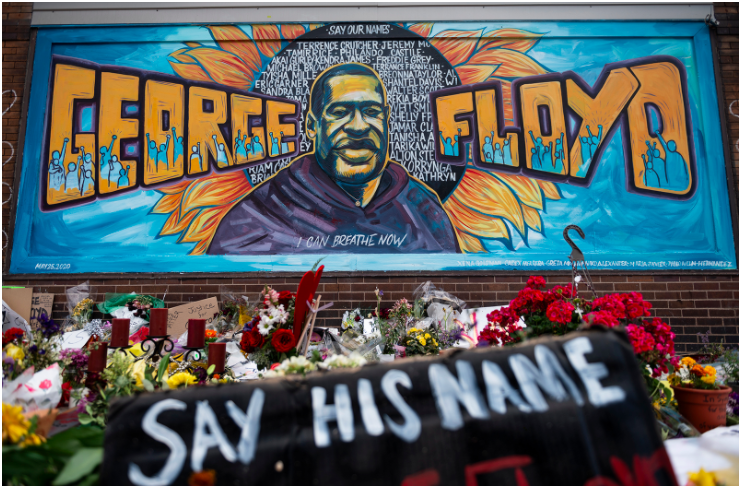
Many Americans had trouble understanding the protests for George Floyd in 2020. This is especially true if you have not been the victim of racism. Humans tend to see things from their own ingroups - the groups that they identify with. As a sociology teacher, I want to explain this in a way that helps people think more critically about why the protests are occurring. However, in order to focus clearly on 2020, I believe that the true seeds of these protests were sowed in 2012, but in order to understand that, I want to give some background leading up to 2012.
Background
In 2008, Barrack Obama was elected President of the United States. His election was met immediately with a lurch to extreme conservatism that brought about some fringe agendas and ideas and made them more mainstream. One example of this lurch was the conspiracy theory politics which attempted to use race to raise doubts and fears about President Obama is that if elected in 2012, he would institute Sharia law in the United States and destroy democracy:
Here is one website detailing the claim and disputing it:
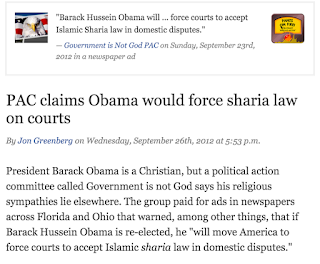
Another example is the following book published during the Obama administration which tried to cast President Obama as a Muslim terrorist. From Wikipedia, "throughout the Obama administration, McCarthy promoted views about the Obama administration's advancement of a "Sharia Agenda", arguing that radical Islamists were working with liberals within the United States government to subvert democracy in the West.[15][16][17][18][19] "
15 results, search (2010-12-07). How Obama Embraces Islam's Sharia Agenda (Bklt ed.). 45 S: Encounter Books. ISBN 9781594035586.
16 ^ results, search (2010-05-25). The Grand Jihad: How Islam and the Left Sabotage America (1st ed.). New York: Encounter Books. ISBN 9781594033773.
17 ^ "Andrew McCarthy's Defense of McCarthyism". Mother Jones. Retrieved 2018-09-23.
18 ^ Testimony of Andrew C. McCarthy Senate Judiciary Committee Subcommittee on Oversight, Agency Action, Federal Rights and Federal Courts Hearing on: "Willful Blindness: Consequences of Agency Efforts to Deemphasize Radical Islam in Combating Terrorism" June 28, 2016.
19 ^ Foundation, The Bradley. "In Encounter Broadside, Andrew McCarthy tells how Barack Obama embraces Islam's sharia agenda > The Bradley Foundation". www.bradleyfdn.org. Retrieved 2018-09-23.
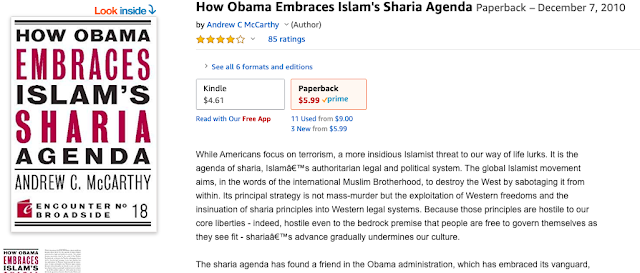
And this website details the dogged claims that President Obama was a Muslim who was not born in the United States who was anti-American. It should be noted that during the 2008 primary election, the Clinton campaign engaged in the same politics of racial resentment when they circulated a photo of Mr. Obama visiting Africa and wearing traditional garb as an attempt to paint him as un-American.
The idea that President Obama was not American was displayed in numerous protests against him.
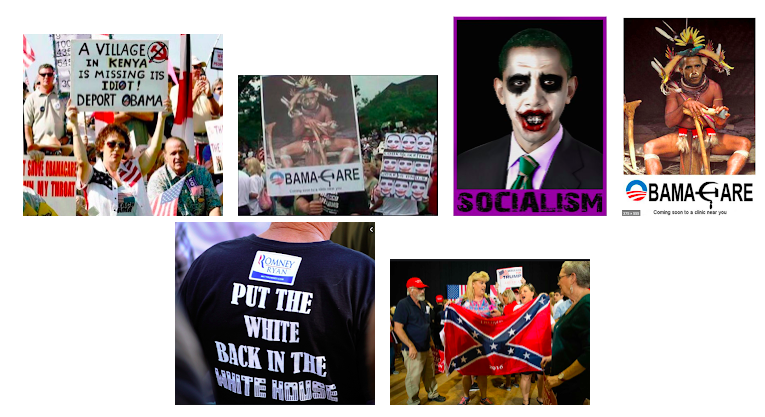
The most successful of these right-wing conspiracy theories is that President Obama was not born in the United States and is not American, also known as the birther movement.

The biggest supporter of this birther movement and the person who gave it the most legitimacy was a reality television star named Donald Trump. Before Trump ever launched his political career, he had a long history of racism reported publicly and openly. His statements go back to 1973! The Atlantic details that history here. Although it started in 1973, it continued up through President Obama's presidency. In March of 2011, the reality star appeared on an episode of The View and touted the birther conspiracy theory. Here is a Guardian video detailing a history of Trump pushing that ridiculous and racist theory. This conspiracy theory is rooted in the idea that if you are not white you cannot be a real American. This is important because at the same time that Trump was saying that Obama was not a real American, there were other real Americans being disproportionately policed and killed for non-violent offenses. I will detail the dozens of examples of this policing below, but first I want to say a word about police.
Police on the frontlines
Police are simply the face of authority being sent to the frontlines of tension in society. I certainly support the good work that police do. My dad was a Chicago cop and I grew up in a neighborhood full of cops and I have many friends who became Chicago cops. It is a dangerous job. It is physically and mentally grueling. Police officers deserve credit and support of the community.
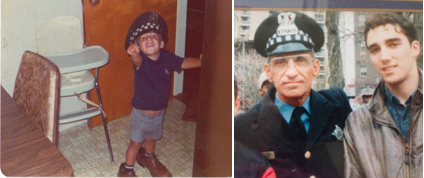
And it should be noted that the police who committed the violence against these Americans perceived as black are not uniquely racist - there is racism throughout the U.S. Teachers (like me), doctors, business owners and everyone else harbor implicit/subconscious bias. For more info, please see this post about implicit racism and how society embeds bias into our subconsciousness. Racism affects all of us because we are all a part of the same society. Even people who consider themselves black show racist attitudes towards people perceived as black. Students in NYC made a Media Matters video titled, "A Girl Like Me " that details the racism that Americans who identify as black put on each other and how that racism impacts young kids who play with dolls. And this episode of What Would You Do shows how people are quicker to be suspicious and to call the police if they see a black man committing the same crime as a white man. Police are simply one more group that is part of a society that teaches these subconscious attitudes.
However, the police are one of the only groups of Americans authorized to use deadly force as part of their jobs. And, the officers represent the institution of government and the enforcement on law and punishment. When bias mixes with the authorization of deadly force, it creates disparate ways in which justice is administered and disparate ways in which government/law enforcement is represented to the public. In other words, this mix of racism in society along with the ability to use deadly force results in disproportionate killing of Americans perceived as black. And because the police get their authority from the government itself, this force seems to be authorized and representative of the institution of government.
In sum, racism is a part of our society in general (not just a part of police) and the President of the United States has been a very public face and promoter of racist ideas.
2012 - The Seed of 2020's George Floyd Protests
The inequality I explained above has been widely reported and talked about within society. However, little seems to change. To bring attention to it, various methods have been used, such as: the hashtag #BlackLivesMatter, kneeling during the anthem, peaceful protests with signs and chants. And yet all of these options have been met with disdain from the larger society. Especially disturbing is that in 2020 the President of the United States - who is President of all of the U.S. citizens, both black and white, Republican and Democrat urban and rural, has consistently expressed a combination of racist views and a condoning of the use of violence to solve problems. And the President is the ultimate authority in law enforcement in the United States.
To understand the recent protests, one must examine the history of the black lives matter movement which begins at the death of Trayvon Martin in 2012.
February 26, 2012 Trayvon Martin
George Zimmerman, a neighborhood watch captain in Sanford, Florida, calls 911 to report "a suspicious person" in the neighborhood. The 911 responders specifically tell Zimmerman to remain in his car and not approach the person. Instead, Zimmerman disregarded the instructions and got out and confronted Trayvon Martin who was talking on his cell phone with his girlfriend while walking home. Zimmerman shot Trayvon Martin. Zimmerman acknowledges that he shot Martin, claiming it was in self-defense.
https://www.cnn.com/2013/06/05/us/trayvon-martin-shooting-fast-facts/index.html
2013 Black Lives Matter Movement Begins on Twitter
The movement began with the use of the hashtag #BlackLivesMatter on social media after the acquittal of George Zimmerman in the shooting death of African-American teen Trayvon Martin in February 2012. From The Guardian, Garza logged on to Facebook. She wrote an impassioned online message, “essentially a love note to black people”, and posted it on her page. It ended with: “Black people. I love you. I love us. Our lives matter.” Garza’s close friend, Patrisse Cullors, read the post in a motel room 300 miles away from Oakland that same night. Cullors, also a community organizer working in prison reform, started sharing Garza’s words with her friends online. She used a hashtag each time she reposted: #blacklivesmatter. The following day, Garza and Cullors spoke about how they could organize a campaign around these sentiments. More on the history here from Smithsonian.
https://en.wikipedia.org/wiki/Black_Lives_Matter
Despite the outrage over Trayvon Martin's murder and the acquittal of his killer, police violence in questionable circumstances continues over the next several years.
April 30, 2014: Dontre Hamilton (Milwaukee)
Dontre Hamilton, 31, was fatally shot 14 times by a police officer in a Milwaukee park. The officer was responding to a call from employees at a nearby Starbucks alleging that Hamilton, who had been diagnosed with paranoid schizophrenia, was disturbing the peace. The officers who arrived first determined that Hamilton wasn't doing anything illegal. Officer Christopher Manney showed up later and, after trying to pat Hamilton down, engaged in a struggle with him that led to the shooting. Manney was not charged.
https://www.buzzfeednews.com/article/nicholasquah/heres-a-timeline-of-unarmed-black-men-killed-by-police-over
June 8, 2014: Assassination of Las Vegas Police
Jerad and Amanda Miller, a married couple who are white and American citizens, scouted a diner in Las Vegas. When they observed two police officers eating there, they fatally assassinated one officer in the back of the head with a handgun, then shot the other in the throat. Both Millers then killed the second officer by shooting him multiple times after he attempted to fire back.[10] Afterwards, they dragged the officers' bodies out of their booth and covered one with a yellow Gadsden flag and a swastika. They pinned a note on the other body, which read: "This is the beginning of the revolution." They also stole both officers' guns and ammunition. During the restaurant shooting, the Millers loudly declared to other patrons that it happened to be the start of "a revolution".
It is important to note that the Miller's assassination was a targeted attack on law enforcement which included a note and eye witness accounts confirming such. However, this did not result in Blue Lives Matter or the blue stripe American flag. In the meantime, numerous other people of color were killed by police in questionable circumstances.
July 17, 2014: Eric Garner (New York)
Eric Garner, 43, was killed after he was put in an illegal chokehold for 15 seconds by a white police officer — allegedly for selling loose cigarettes. Garner said "I can't breathe" 11 times as he was held down by several officers on a sidewalk. The officer who put Garner in the chokehold, Daniel Pantaleo, was not charged. Garner's death sparked peaceful protests across the nation, with demonstrators adopting the phrase "I Can't Breathe" as a symbol and slogan of protest.
Video is at the link below. You can see Mr. Garner with his hands up and you can hear him say "I can't breathe".
https://www.theguardian.com/us-news/video/2014/dec/04/i-cant-breathe-eric-garner-chokehold-death-video
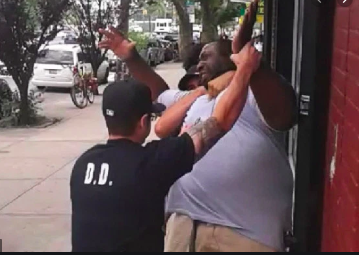
Figure 1 Eric Garner with his hands up moments before he is tackled and choked to death.
Aug. 5, 2014: John Crawford III (Dayton, Ohio)
John Crawford, 22, was shot and killed by a police officer at a Walmart in Beavercreek, Ohio. There did not appear to be a confrontation with the police, and Crawford was unarmed — he had been holding a toy BB gun. The officers involved in the shooting, Sean Williams and David Darkow, were not charged.
https://youtu.be/S9FtNOV6Qhk
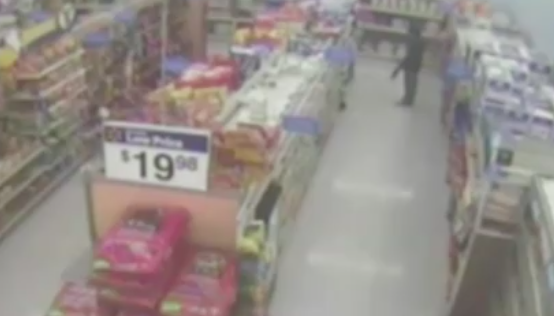
Figure 2 Mr. Crawford holding a pellet gun that he picked up off the shelf at a Walmart before he is killed by police within seconds of their arrival.
Aug. 9, 2014: Michael Brown Jr. (Ferguson, Missouri)
Unarmed Michael Brown, 18, was shot and killed by Ferguson police officer Darren Wilson.
In November, a grand jury declined to charge Wilson in the fatal shooting. Brown's death and the lack of charges against Wilson sparked protests, some of them violent, in Ferguson and across the nation.
Aug. 11, 2014: Ezell Ford (Florence, California)
Ezell Ford, a 25-year-old mentally ill man, was shot three times, including once in the back, by a white police officer. He was unarmed. The investigation is still ongoing, but it has been placed on an "investigative hold". So far, no charges have been filed against Sharlton Wampler and Antonio Villegas, the two officers involved.
Aug 19, 2014 Kjieme Powell, St. Louis
Just 10 days after Michael Brown was shot to death, this happened in nearby St Louis. The police were called because this man stole two soft drinks from a convenience store. The police showed up and within 20 seconds the police had shot him 12 times. Then they proceeded to handcuff the lifeless body with hands behind his back. The video is available at the link below.
https://youtu.be/j-P54MZVxMU
https://www.newsweek.com/new-video-police-shooting-2nd-man-st-louis-emerges-266041
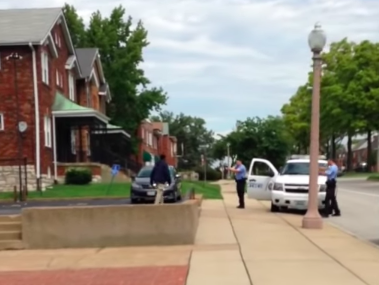
Figure 3 Police were on the scene for just seconds when they shoot Mr Powell is shot dead a second after this photo.
Sept. 4, 2014 Dashcam Video Shows State Trooper Shooting Black Man Reaching for His Driver’s License
State trooper rolls up on Mr. Jones and says can I see your license please? Jones reaches for his license and the policeman shoots him in a split second. Afterwards, the man says why did you shoot me? Video is available at the link below.
https://www.youtube.com/watch?v=1yEQDBSt58w
October 2014 Laquan McDonald (Chicago)
https://www.theguardian.com/us-news/video/2015/nov/24/chicago-officials-release-video-showing-police-killing-of-laquan-mcdonald-video
Nov. 13, 2014: Tanisha Anderson (Cleveland)
Tanisha Anderson, 37, died after officers in Cleveland allegedly slammed her head on the pavement while taking her into custody. Anderson's family said she had bipolar disorder and schizophrenia.
Nov. 20, 2014: Akai Gurley (Brooklyn, New York)
Akai Gurley, 28, was shot and killed by a police officer while walking in a dimly lit New York City public housing stairwell with his girlfriend. Gurley, who was unarmed, was pronounced dead at a hospital. New York Police Department Commissioner Bill Bratton called the shooting an "accidental discharge."
Nov. 22, 2014: Tamir Rice (Cleveland)
Tamir Rice, 12, was shot and killed by Cleveland police after officers mistook his toy gun for a real weapon. The two police officers involved, Timothy Loehmann and Frank Garmback, have not been charged. The video is available at the link below.
https://www.theatlantic.com/notes/2015/10/the-legal-murder-of-tamir-rice/410128/
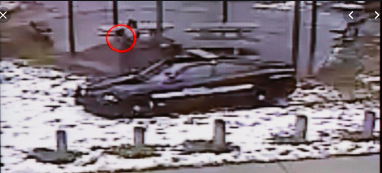
Figure 4Tamir Rice (12 yrs old) is shot within seconds of police arriving on scene. He was holding a toy gun.
Dec. 2, 2014: Rumain Brisbon (Phoenix)
Rumain Brisbon, 34, was shot and killed by a Phoenix police officer who mistook a pill bottle for a weapon. The officer, Mark Rine, was not charged following a probe by the Maricopa County attorney's office, according to the New York Daily News. Jerame Reid, 36, was shot and killed by police officers in Bridgeton, New Jersey. He was a passenger in a car driven by his friend, who was pulled over by police.
Until this time, the phrases Black Lives Matter and All Lives Matter were being used interchangeably. However, a number of events that occurred between Dec 2014 and Jan 2015 polarized the movement to be only Black Lives Matter.
Dec 10, 2014 First documented incident of "black lives matter" being changed to "all lives matter" to co-opt the message from Americans who are black
Two students put up the poster Friday, but Chandler Clothier, the student who designed the poster, said she was called to the principal's office on Monday. Principal Linda MacKenzie told her that she failed to get prior approval for the poster and needed to change the title, "#blacklivesmatter" to "all lives matter," or take the poster down.
Dec 17, 2014 College administrator shouted down for saying "all" lives not "black" lives.
The apologies continued at Smith College, after President Kathleen McCartney publicly joined demonstrators and declared "all lives matter." But she was immediately denounced for not saying "black lives matter." McCartney asked forgiveness and promised not to stray from the expected language.
And then in December of 2014, two NYC police officers were killed in a targeted homicide by a troubled individual with a criminal history. It was a heinous assassination of police officers. This became a spark that ignited a movement to counter the black lives matter movement.
December 20, 2014 Police Officers Killed in Targeted Homicide
Police Officers Rafael Ramos and Wenjian Liu in Brooklyn, New York are killed in a targeted attack against police by Ismaaiyl Brinsley. Brinsley, a high-school dropout who had shot an ex-girlfriend in the stomach earlier Saturday, killed the officers and then ran from the scene to a nearby subway station, where he took his own troubled life. Those who were quick to blame Brinsley's actions solely on recent protests in New York and other cities must acknowledge his criminal past and reported mental instability. This was not an average 28-year-old New Yorker who was leading a productive life before last weekend.
December 2014 Blue Lives Matter is Created
Originating in New York City, Blue Lives Matter NYC[12]
https://en.wikipedia.org/wiki/Blue_Lives_Matter
Blue Lives Matter
After the single incident by a lone individual, a few police/former police start a "blue lives matter" movement. Although the act of violence against these police is heinous, the founders of the movement choose "blue lives matter". It is a direct co-opt from the "black lives matter" movement. It is a way of creating an opposing side; you either side with black lives matter or blue lives matter. Even a policing textbook explains the movement as "A pro-police movement ... established in response to Black Lives matter..." Consider the myriad ways that the movement could have been titled such as "Support Police", or "Respect Law Enforcement". But the title chosen was a direct contrast to Black Lives Matter.
Blue Wall of Silence
Also worth examination in the symbolic meaning of blue lives matter, is the long history of the "blue wall of silence." The blue wall of silence, is one term given to the culture of police defending each other - even in the wake of corrupt or unlawful policing methods. This extreme value of supporting police no matter what has been manifested in trials of internal investigations and in police misconduct cases (see this link to the Marshall Project https://www.themarshallproject.org/records/605-blue-wall-of-silence). One of the highest profile cases was in Chicago with the Laquan McDonald shooting cover-up, detailed in this Chicago Tribune Timeline (https://www.chicagotribune.com/news/laquan-mcdonald/ct-graphics-laquan-mcdonald-officers-fired-timeline-htmlstory.html). This unconditional sanctioning of police tactics is widely researched and reported on. So, when some Americans hear things like "back the blue," or "blue lives matter," they equate that with the blue wall of silence and the backing of police misconduct and use of illegal force. It's seen as sanctioning lying about police misconduct and the allowing for police violation of civil rights of suspects.
Dec. 30, 2014: Jerame Reid (Bridgeton, New Jersey)
In dashcam video footage of the stop, an officer is heard claiming that there is a gun in the glove compartment. Police shouted at Reid not to exit the car, but he did, with his hands apparently in front of his chest. That's when officers Braheme Days and Roger Worley opened fire, striking Reid.
Jan. 10, 2015 "Pro-Blue Rally" Saturday on Independence Mall,
Speakers urged the public to appreciate the dangerous work that police do every day. Protestors at recent rallies against perceived police brutality in New York and Ferguson, Mo., "don't speak for America," U.S. Sen Pat Toomey (R. Pa.) told the crowd. Noting that 115 police officers died in the line of duty in the United States in 2014 -- and that 10 have already been shot this year -- Toomey called it a "great day to be standing up for our law enforcement officers" who "protect us day in and day out." With a theme that "All Lives Matter," the rally was in response to numerous recent demonstrations around the country protesting the deaths of unarmed black men by white police officers. With a theme that "All Lives Matter," the rally was in response to numerous recent demonstrations around the country protesting the deaths of unarmed black men by white police officers.
https://www.inquirer.com/philly/news/20150111_Police_supporters_gather_in_bitter_cold_on_Independence_Mall.html
The Politicization of Blue Lives Matter
Just weeks after the creation of the Blue Lives Matter group and the thin blue line flag, Senator Toomey from PA solidified the All Lives movement as a direct opposition to the Black Lives movement. If there was any doubt of the Blue Lives movement being a reaction to the Black Lives, that was erased at this rally. Toomey rallied the crowd against anyone who challenged police. His message was that even if people are simply opposing the killing of unarmed Americans who are black, those people are anti-police and anti-American. That position is reinforced by the co-opting of the American flag which was now being incorporated into the thin blue line flag. The merging of these creates the message that opposing police is unAmerican.
In the meantime, the killings continued:
April 2, 2015: Eric Harris (Tulsa, Oklahoma)
Eric Harris, 44, was shot and killed by a 73-year-old reserve deputy officer who allegedly mistook his own gun for a Taser. The entire incident was captured on a dashcam video. The officer, Robert Bates, was charged with manslaughter.
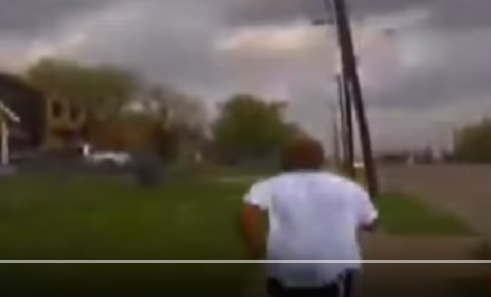
Figure 5 Eric Harris a second before being shot from behind by police.
April 4, 2015: Walter Scott (North Charleston, South Carolina)
Walter Scott, 50, was shot by a police officer while running away from a traffic stop for a broken taillight. Officer Michael Slager claimed Scott had taken his stun gun. Slager was subsequently fired and charged with murder after a video surfaced showing Scott running away, his back to the officer, as Slager fired his gun. Video is available at the link below.
https://www.theguardian.com/us-news/video/2015/apr/09/north-charleston-shooting-police-scanner-video
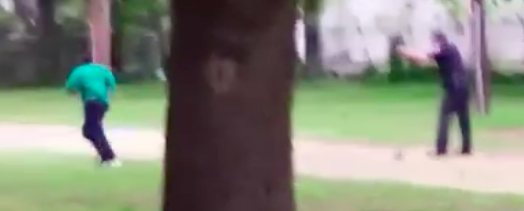
Figure 6 Mr. Scott in green is running from a police officer when he is shot in the back.
April 19, 2015: Freddie Gray (Baltimore)
Freddie Gray, 25, died of a spinal cord injury a week after he was arrested by Baltimore police. It's still unclear how Gray sustained the injury. Officials say he was stopped after fleeing "unprovoked upon noticing police presence" and arrested for allegedly possessing a switchblade. He was put in a police van, which is where police say he suffered a medical emergency. The officers involved in his arrest were placed on leave, and on Friday, the state's attorney announced that they had been criminally charged in connection with Gray's homicide.
By August of 2015, it was clear that there was a disparity between all lives matter and black lives matter. In American discourse, they had come to represent opposing forces.
June 16, 2015 Donald Trump launches his bid for President of the US with a speech that calls Mexicans rapists who are bringing crime and drugs to the US. Guardian article here.
August 2015 All lives matter has attracted national attention
When asked which statement is closest to their own views, 78% of Likely U.S. voters say "all lives matter". A new Rasmussen Reports national telephone survey finds that just 11% say black lives matter. Nine percent (9%) say neither statement reflects their point of view.
http://www.rasmussenreports.com/public_content/politics/general_politics/august_2015/black_lives_matter_or_all_lives_matter
Aug. 29, 2015 Police Officer Ambushed in Texas
Ambush-style murder of Sheriff Deputy Darren Goforth at a gas station in suburban Houston
https://www.npr.org/2015/09/17/441196546/is-there-a-war-on-police-the-statistics-say-no
Sept 17, 2015 NPR Report Is There A 'War On Police'? The Statistics Say No
Seth Stoughton, a former police officer and an assistant law professor at the University of South Carolina, calls that interpretation "nonsense." "It's misleading to compare one year to another year," he says. "2013 was the safest year for police officers, ever," he says. "The safest year in recorded history." In fact, in the larger scheme of things, 2014 looks pretty normal. The number of murders of police was about the same as 2012, and actually a lot lower than 2011. The long-term trend is even more encouraging: On average, only about half as many police are murdered every year now, as compared with the 1970s. Stoughton says some of that improvement is probably due to better training, better gear and radically improved trauma care for cops who are shot.
Nov 23, 2015 Black Lives Matter Protester beaten up at Trump rally and thrown out while crowd chants "All Lives Matter"
The important part starts around the one-minute mark of the original video, when the protester is pulled up off the floor and led away by members of the event security staff and some of the more aggressive volunteers from the crowd. The man is wearing a T-shirt bearing the slogan “Black Lives Matter”. At least one Trump supporter standing near the video camera starts chanting a refutation: “All lives matter.” It’s valuable to see images of a black man being shoved and pushed and jeered and taunted to the soundtrack of these words. In 2015, in America, those three words, “all lives matter”, are a racist slogan. Any other interpretation is wrong. Watch the video at the link below.
https://www.theguardian.com/commentisfree/2015/nov/23/all-lives-matter-racist-trump-weekend-campaign-rally-proved-it

Figure 7 Black lives matter protester is beaten at Trump rally while crowd chants "All lives matter."
November 2015 Trump expresses approval of using violence against a BLM protester and using the Nword.
After a Black Lives Matter activist was kicked, punched and, he said, called the N-word at a campaign event in Birmingham, Alabama, in November, Trump expressed his approval. "Maybe he should have been roughed up because it was absolutely disgusting what he was doing," the now frontrunner for the GOP presidential nomination told Fox & Friends the next day. Trump said the man deserved the treatment because he had been "very obnoxious" and "so loud." The remarks can be heard just after the 11-minute mark in the video above. Mashable summary and video here.https://time.com/4253898/donald-trump-protester-north-carolina-rally-punched/
February 28, 2016 Candidate Trump throws out Black Lives Matter protesters and incites crowd with All Lives Matter Chant.
https://www.youtube.com/watch?v=kpijYTMpz3k
http://www.realclearpolitics.com/video/2016/02/28/blacklivesmatter_protests_trump_in_alabama_trump_responds_all_lives_matter.html
Trump throws out Black lives Matter Protesters and he incites the crowd by yelling "All lives matter." Here's some metaphors to help explain why the Black Lives Matter movement is important and it shouldn't be trumped by "all lives matter".
March 9, 2016 Trump supporter punches a protester in the face.
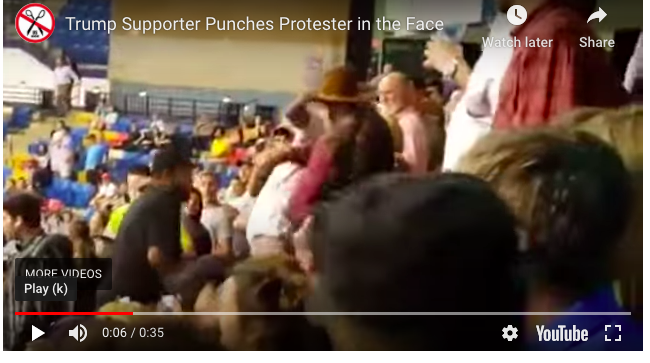
From Time magazine and video available here, Rakeem Jones, 26, was being led out of the rally when he was punched by a man in the stands and then tackled to the ground by law enforcement officers, the Washington Post reported. “My eye still hurts. It’s just shocking. The shock of it all is starting to set in. It’s like this dude really hit me and they let him get away with it. I was basically in police custody and got hit,” Jones said in an interview with the Post. And, after getting punched in the face, the police tackled Mr. Jones instead of the man that punched him!
March 10, 2016 Trump supporter threatened to kill the protester.
Then when interviewed on Inside Edition, the man threatened to kill the protester. McGraw defended his actions, telling Inside Edition that he enjoyed punching 26-year-old Rakeem Jones and that the protester “deserved it.” “You bet I liked it. Knocking the hell out of that big mouth,” McGraw said. “The next time we see him, we might have to kill him. We don’t know who he is. He might be with a terrorist organization.”
March 11, 2016 Trump advocates using violence against peaceful protesters.
“Part of the problem and part of the reason it takes so long [to kick them out] is nobody wants to hurt each other anymore,” Trump said during a speech at the Peabody Opera House — around 12 miles from Ferguson, Mo., the site of racially charged mass protests in 2014. “There used to be consequences. There are none anymore,” Trump said. “These people are so bad for our country. You have no idea folks, you have no idea.”
March 13, 2016 Trump doubles down on supporting the use of violence against protesters.
On Meet the Press, Trump says that he will pay legal fees of his supporter who punched a protestor.
July 5, 2016, Alton Sterling shot dead at close range by two white Baton Rouge Police Department officers in Baton Rouge, Louisiana.
The officers were attempting to control Sterling's arms, and Sterling was shot by them after reportedly reaching for the loaded 38 caliber handgun in his pocket.[4] Police were responding to a report that a man in a red shirt was selling CDs and that he had used a gun to threaten a man outside a convenience store.[5] The owner of the store where the shooting occurred said that Sterling had started carrying a gun a few days prior to the event as other CD vendors had been robbed recently. He also said that Sterling was "not the one causing trouble" during the situation that led to the police being called.[6][7][8] The shooting was recorded by multiple bystanders.
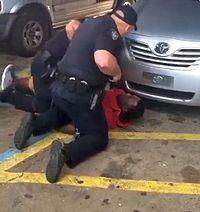
July 6, 2016 Philando Castile,[a] killed during traffic stop with three-year-old in back seat.
A 32-year-old African-American, was pulled over while driving in Falcon Heights, Minnesota, and killed by Jeronimo Yanez, a St. Anthony, Minnesota Latino police officer. Castile had been driving a car at 9:00 pm with his girlfriend, Diamond Reynolds, and her four-year-old daughter when he was pulled over by Yanez and another officer in a suburb of Saint Paul, MN.[3][4] After being asked for his license and registration, Castile had told Officer Yanez that he had a firearm, to which Yanez replied, "Don't reach for it then", and Castile said "I'm, I, I was reaching for..." Yanez said "Don't pull it out", Castile replied "I'm not pulling it out", and Reynolds said "He's not..." Yanez repeated "Don't pull it out"[5] and then shot Castile seven times.[6]
https://en.wikipedia.org/wiki/Shooting_of_Philando_Castile
https://www.npr.org/2016/07/07/485049343/minn-man-shot-by-police-while-inside-a-car-with-a-woman-and-child
https://www.cnn.com/2017/06/20/us/philando-castile-shooting-dashcam/index.html
July 8, 2016 Five Dallas Officers Killed by Micah Johnson
Johnson had no direct ties to any protest or political group, either peaceful or violent, but his Facebook page showed that he supported the New Black Panther Party, a group that has advocated violence against whites, and Jews in particular. The attack appeared to be the deadliest for law enforcement officers in the United States since Sept. 11, 2001.
July 2016 On Google, both Black Lives Matter and Blue Lives Matter peak in searches.
In the Google Trend data below, it is evident that in 2015 and 2016 the google searches for blue lives matter followed an increase in searches for black lives matter. In other words, blue lives matter was a reaction to black lives matter. The movement became and opposition force, not a contemporaneous movement.
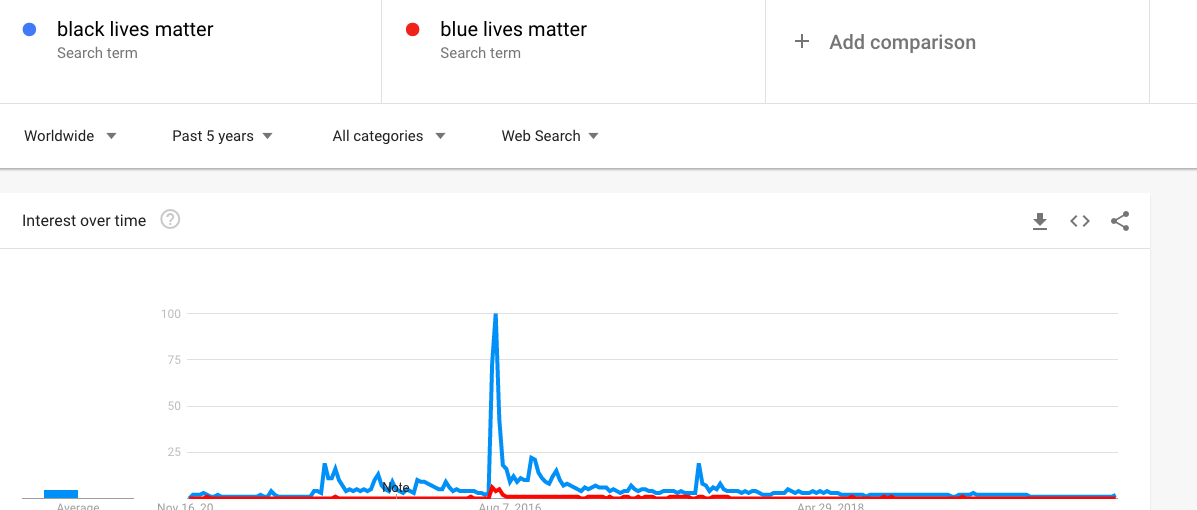
Figure 8This comparison of google searches shows that in 2015and 2016, Blue Lives Matter has followed Black Lives Matter.
July 18, 2016, Charles Kinsey, a mental health therapist, was shot by police in North Miami, Florida.
Kinsey, had been retrieving his autistic 23-year-old patient, Arnaldo Rios Soto, who had wandered from his group home. Police encountered the pair while searching for an armed suicidal man. Kinsey was lying on the ground with his hands in the air and trying to negotiate between officers and his patient when he was shot. While Kinsey lay on the ground with his hands raised, one officer, identified by the city as North Miami Police Department Special Weapons and Tactics (SWAT) team member Jonathan Aledda, fired three rounds from a rifle, with one bullet striking Kinsey in the leg.[1][6] The shooting occurred a block from the group home where Kinsey worked at 1365 NE 128th St.[7]

https://en.wikipedia.org/wiki/Shooting_of_Charles_Kinsey
August 26, 2016 Colin Kaepernick protests the numerous killings of unarmed Americans who are black.
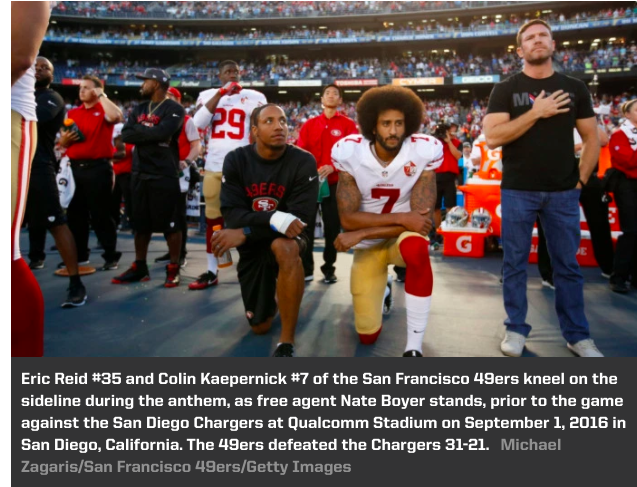
A Kaepernick timeline is at The Undefeated here and in For the Win here.
A few days later, President Obama was asked about Kaepernick and he said, “I’d rather have young people who are engaged in the argument and trying to think through how they can be part of our democratic process than people who are sitting on the sidelines not paying attention at all.”
A few days later, Megan Rapinoe from US Women's Soccer took a knee to join in support for Kaepernick.
November 2016 Joshua Beal is shot 8 times by an officer with a history of racial incidents
https://www.chicagoreporter.com/chicago-officer-cleared-of-shooting-joshua-beal-has-history-of-racially-charged-encounters/
Beal was shot eight times during a fight with plainclothes officers that erupted after a vehicle in a motorcade leaving a funeral he was part of was stopped by an off-duty firefighter for blocking a fire lane in Mount Greenwood, a majority-white Southwest Side neighborhood home to many members of law enforcement. Beal and the group he was with were black and the shooting sparked days of contentious protests. One of the officers, Sgt. Thomas Derouin, has a history of being involved in racially charged cases of excessive force, as detailed in The Chicago Reporter’s Settling for Misconduct database of all Chicago police lawsuit settlements from 2011 to 2017. He was named in the $55,000 settlement for a 2012 case in which officers tased, threw to the ground, and pressed a gun to the head of a man who they also used racial epithets against. The man was later cleared of charges. Racial epithets were also used in a 2008 incident, which was later settled for $10,000, in which Derouin and another officer are alleged to have violently stopped a man in South Shore whose ribs were broken in the encounter. The charge against the man was later dismissed. Derouin also has more than 25 complaints filed against him, which is more than 94% of other officers, according to the Citizens Police Data Project, including allegations of use of force, illegal search, and false arrest.
August 5, 2017 Thin Blue Line flag displayed at Portland rally of Proud Boys and Patriot Prayer group
https://www.timesofisrael.com/police-clear-right-wing-rally-in-portland-as-scuffles-break-out/
From the Southern Poverty Law Center and Anti-Defamation League, Proud Boys and leaders regularly spout white nationalist memes and maintain affiliations with known extremists. They are known for anti-Muslim and misogynistic rhetoric. Proud Boys have appeared alongside other hate groups at extremist gatherings like the "Unite the Right" rally in Charlottesville. Indeed, former Proud Boys member Jason Kessler helped to organize the event, which brought together Klansmen, antisemites, Southern racists, and militias. Kessler was only “expelled” from the group after the violence and near-universal condemnation of the Charlottesville rally-goers.
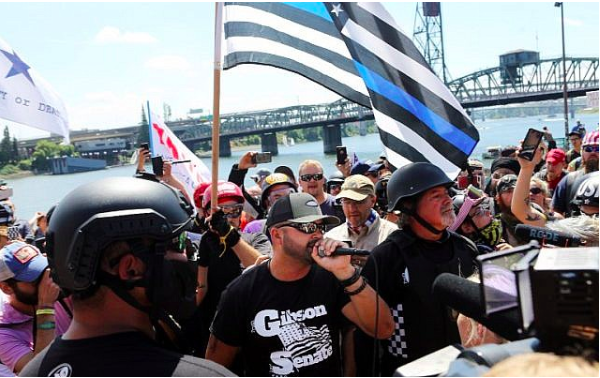
August 11, 2017 Neo Nazi/white nationalist rally in Charlottesville Virginia
Hundreds of neo-Nazis and white supremacists marched onto the University of Virginia’s campus in Charlottesville chanting “Jews will not replace us” and “Blood and soil,” a Nazi slogan. The “Unite the Right” rally was protesting the proposed removal of a statue of Confederate General Robert E. Lee.
Vice News reported live with a reporter who was embedded with the neo-Nazi white supremacists. Vice produced a 20 minute documentary here.
David Duke, the former Ku Klux Klan leader, who participated in the Charlottesville rally, called it a “turning point” for his own movement, which seeks to “fulfill the promises of Donald Trump.”
August 12, 2017 Deandre Harris is beaten by Neo Nazi/white nationalists
Detailed in this article from the Daily Beast, 4 men brutally beat Deandre Harris.
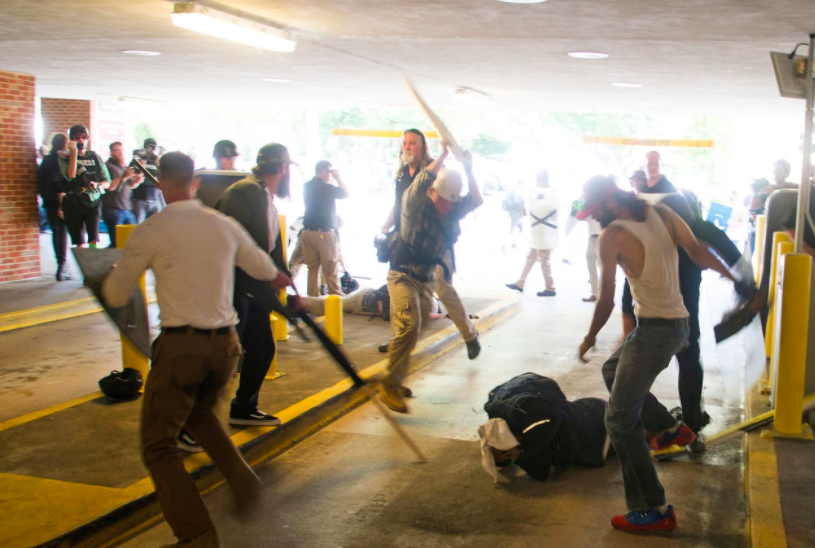
Figure 9 Deandre Harris lays on ground while 4 men beat him with blunt objects.
Later that day, Heather Heyer is killed for publicly protesting that Black Lives Matter.
Then during a counter protest in Charlottesville, where marchers chanted "Black Lives Matter", a Neo-Nazi supporter drove his car into the crowd smashing into the counter protesters and sending people hurling through the air. Heather Heyer was killed. People magazine details that here. You can watch the video of the murder in this clip from the Vice documentary.
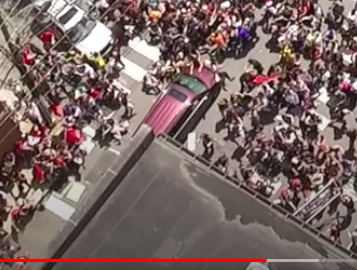
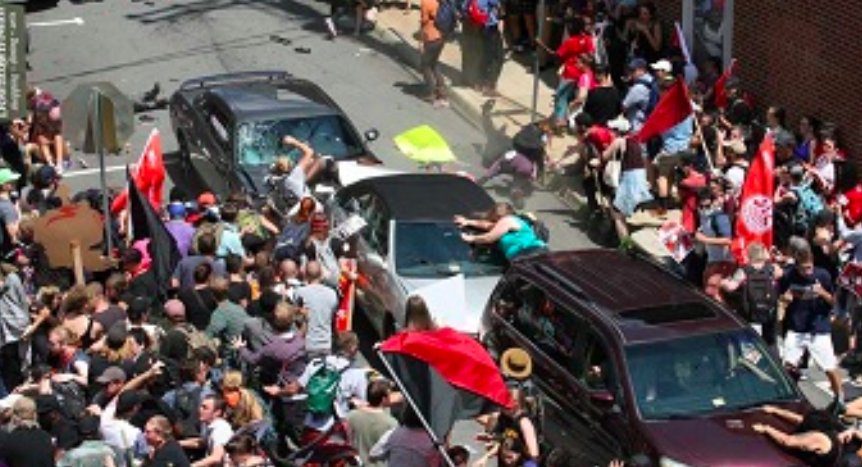
Trump says that there was violence on many sides.
He denounced “this egregious display of hatred, bigotry, and violence on many sides.” He paused, then to emphasize, “On many sides.”
One side marched with torches and said Jews will not replace us and chanted "Blood and soil!," a Nazi slogan, and then beat Deandre Harris and killed Heather Heyer. The other side marched to say "Black Lives Matter" and Hate has no home here" and "White supremacists are not welcome in Charlottesville." But, Trump said that violence was on many sides.
August 12, 2017 Charlottesville thin blue line flag was used by white nationalist groups
During the Unite the Right rally in Charlottesville in 2017, the thin blue line flag was used by white nationalist groups to symbolize support for police and opposition to the Black Lives Matter movement.[19][20]
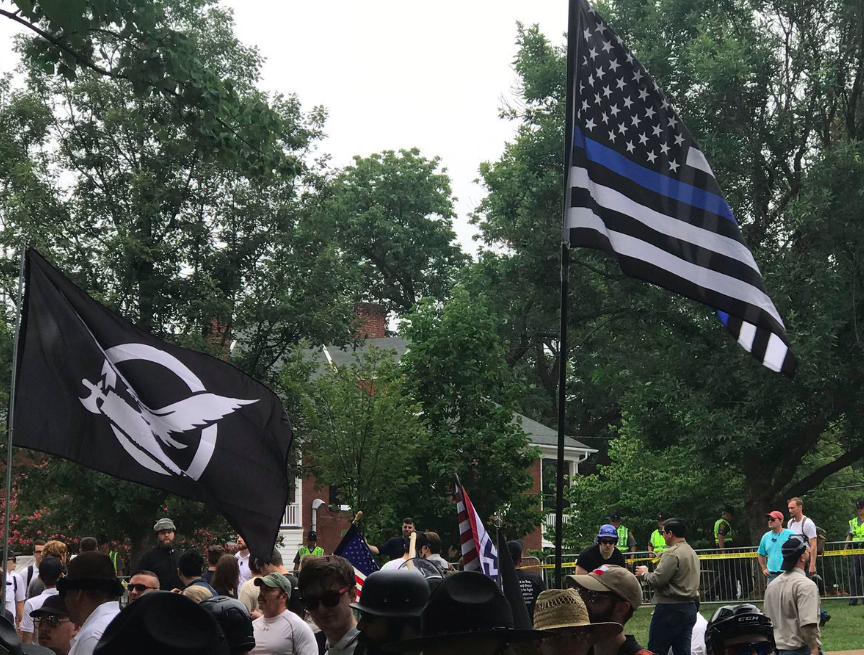
Figure 10 The Vanguard America Flag, a Neo-Nazi Symbol being flown with the Thin Blue Line Flag
August 14, 2017 Trump says there were “very fine people on both sides.”
White-nationalist leaders welcomed his remarks.
September 22, 2017 Trump rips NFL players who protest in a speech to a crowd in Alabama
May 24, 2018 Sterling Brown tasered
Video is released of, a basketball player for the Milwaukee Bucks being tasered after police engage with him for improper parking. Video from BBC here.
May 24, 2018 Trump says that NFL players who kneel should not be allowed in the country.
Trump says, "You have to stand proudly for the national anthem or you shouldn't be playing, you shouldn't be there, maybe you shouldn't be in the country." Trump's message is that anyone who peacefully draws attention during the national anthem to Americans wrongfully killed by authorities is not a real American and maybe should have their birthright citizenship revoked. "Wouldn't you love to see one of these NFL owners, when somebody disrespects our flag, to say, 'Get that son of a bitch off the field right now, out, he's fired. He's fired,'" Mr. Trump said at the time. "That's a total disrespect of our heritage. That's a total disrespect of everything that we stand for." BBC article here.
July 30, 2018 Lebron James speaks out calmly.
On CNN, Lebron says that Trump is trying to divide us. Lebron said, “We’re in a position right now in America, more importantly, where this race thing has taken over because I believe our president is kinda trying to divide us,” he said. “What I’ve noticed over the last few months is that he’s kind of used sports to kind of divide us.” Trump responded via Twitter that Lebron was very unintelligent as reported here on NBC.
September 10, 2018 Botham Jean is killed in his own apartment by off duty Dallas officer
Dallas police officer Jean Guyger came home from work and went to the wrong apartment. She saw Mr. Botham inside and drew her weapon while verbally shouting at him to comply with her. Confused because he was in his own apartment, Botham did not comply and the Guyger shot him dead. From the Daily Beast.
November 11, 2018 Jemel Roberson was shot by a Midlothian police officer
Roberson was a 26-year-old African American security guard for Manny's Blue Room Bar in Robbins, Illinois when he was fatally shot by Ian Covey, a police officer responding to a call of shots fired at the bar.[1] Roberson was working for the bar as a security guard when four people were non-fatally shot by a gunman. After Roberson subdued and pinned the shooter to the ground, he was shot by a Midlothian police officer arriving at the scene. Witnesses stated that Roberson was wearing a vest that had the word "SECURITY" printed on it, while an Illinois State Police (ISP) preliminary investigation stated he was wearing plain black clothing with no markings identifying him as security.
March 13, 2020 Breonna Taylor is killed by police conducting a search warrant on the wrong residence.
Shortly after midnight on March 13, Louisville police, executing a search warrant, used a battering ram to crash into the apartment of Breonna Taylor, a 26-year-old African-American emergency room technician. After a brief confrontation, they fired several shots, striking her at least eight times.
Breonna Taylor, an EMT worker — says she and her boyfriend thought they were being burglarized and he fired at the officers in self-defense. Taylor, 26, was shot eight times by police. Records show that the police investigation was centered around a "trap house" more than 10 miles from Taylor's apartment, and that a judge had approved a "no-knock" search warrant, meaning officers did not have to identify themselves, according to The Courier-Journal.
May 2020 Ahmaud Arbery is jogging when he is chased down by 3 white men and shot to death.
Ahmaud Arbery, a 25-year-old black man, set out for a jog in Brunsick, Georgia, one afternoon in late February.
Gregory McMichael, 64, and his son, Travis McMichael, 34, both of whom are white, say they mistook Arbery for a burglary suspect. So, they grabbed two guns, hopped into their pickup truck, and pursued him. Arbery was shot during an altercation with the pair, and died of his wounds. He was buried six days later, but the men who killed him roamed free for more than two months. They were linked to local law enforcement. It was not until the video surfaced that the men were arrested. Insider details the events. The fatal video of Arbery being pursued and shot is here.
May 11, 2020 Trump implies that Arbery's murder might have been justified.
Marc Lamont Hill tweeted, “It took 74 days, a smoking gun video, and a national campaign to get an arrest in the Ahmaud Arbery case. And many of us, quite reasonably, have no faith that a trial will produce justice. Yet another example of how little Black life is worth to this country.”
Minnesotan Spokesman Reporter published here.
George Floyd dies while Minnesota police pin him face down to the ground with a knee on his neck for over 8 minutes.
From CNN, three videoes show the timeline of events.
In sum, even after the killing of dozens of Americans and the Black Lives Matter movement and Colin Kaepernick taking a knee and Lebron speaking out, there was no social change and instead there was resistance - a counter movement against Black Lives Matter, Colin Kaepernick being fired and banned from the NFL, a President speaking out against the movement or change, and an endorsement of white supremacy by the President of the United States.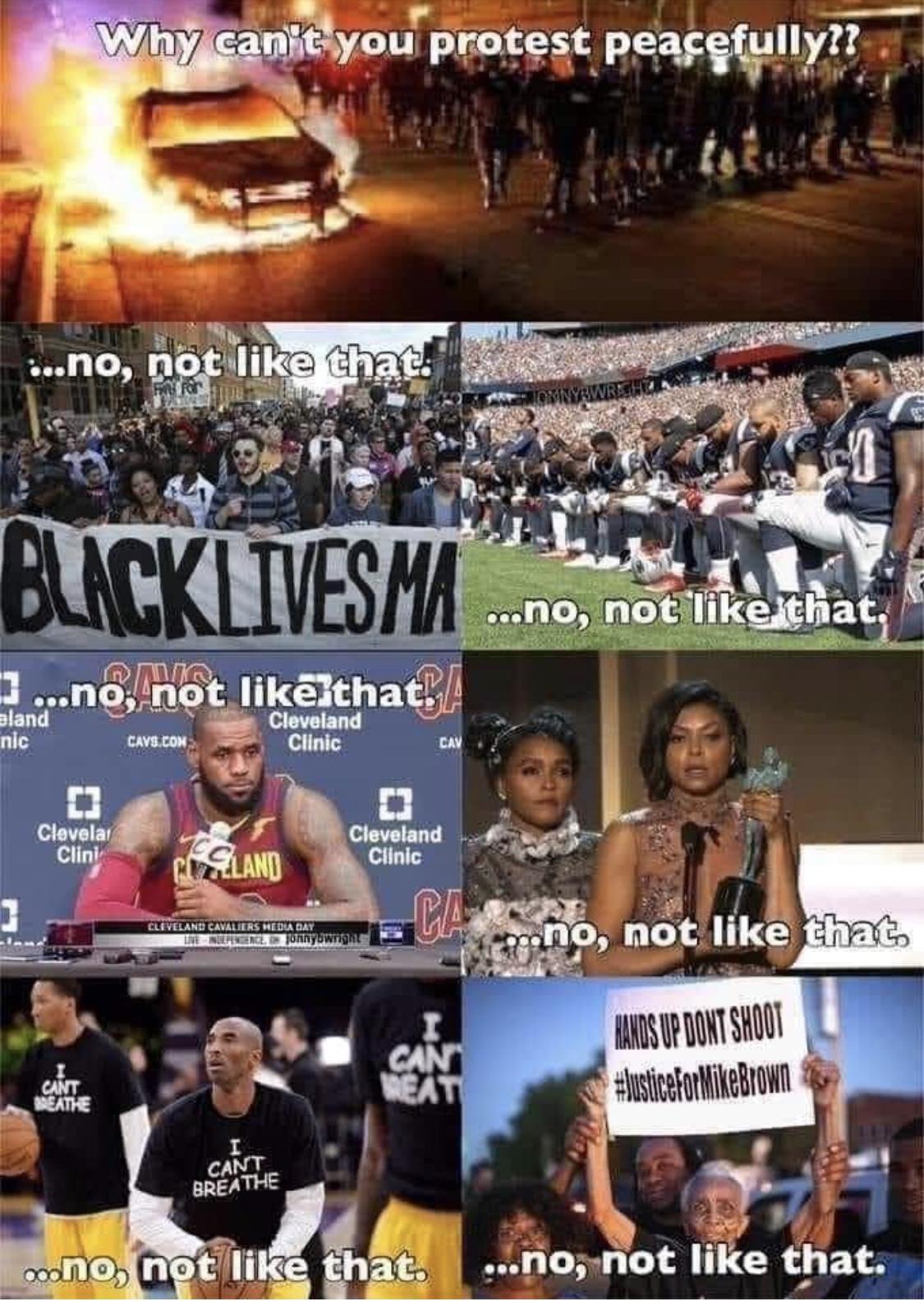
Racism is not just in the Police Department
Racism is not simply limited to police departments across America. Racism occurs in everyday life daily for Americans who are perceived as black. This makes it more likely to have police involved with African Americans and in ways that are not typical for white Americans. There are a number of examples (A NY Police Lt., Harvard U. President, State Senator Obama) of Americans who are perceived as black being treated as they don't belong. Sometimes, they are seen as not belonging in the U.S. or not being American, but in other instances, it is that they do not belong within a more microsociological context such as living in a certain house or neighborhood. In 2018, for example, police across the United States have been called to investigate black people for doing all kinds of daily, mundane, noncriminal activities. In 2018 alone, CNN has reported on police being called on African-Americans for:
Operating a lemonade store
Golfing too slowly
Waiting for a friend at Starbucks
Barbecuing at a park
Working out at a gym
Campaigning door to door
Moving into an apartment
Mowing the wrong lawn
Shopping for prom clothes
Napping in a university common room
Asking for directions
Not waving while leaving an Airbnb
Redeeming a coupon
Selling bottled water on a sidewalk
Eating lunch on a college campus
Riding in a car with a white grandmother
Babysitting two white children
Wearing a backpack that brushed against a woman
Working as a home inspector
Working as a firefighter
Helping a homeless man
Delivering newspapers
Swimming in a pool
Shopping while pregnant
Driving with leaves on a car
Trying to cash a paycheck
And these are just the incidents that CNN has reported! There are no doubt many others. A review of news headlines this year shows that police were also called on other people of color. But it seemed to happen most often to black people: black people just going about their business.
In sum, everyday life is exhausting when you must face racism in your daily living and racism is far more widespread than policing.
Not All Protests or Protesters Are the Same
Why Protest?
So that is the context with which the protests are happening. It is not simply a protest of the death of George Floyd. It is protesting racism within society that has killed dozens of Americans perceived as black. And it is protesting a system of law enforcement that seems to not only allow these events to continue but a system that condones the use of violence and racism all the way to the office of the President of the United States.
There are varied experiences and interests happening at the same time. Many protesters want to raise awareness and affect systemic change to the racism and violence. The hashtag #BlackLivesMatter was not only insufficient, it was derided by people who saw it as anti-white or anti-police. Taking a knee was not sufficient; it was seen as un-American and un-Patriotic. In the meantime, there has been a tone from the White House of condoning the racism and violence. This leaves people thinking that it is more than racist incidents that scourge our country. Racism is being embedded and sown into the very institutions that our country revolves around: our economic system, our criminal justice system, our healthcare system. It is remarkable to me that it took this long for such forceful protests to emerge.
Protesting these institutions means disrupting the everyday life that these institutions create: driving and traffic rules, being respectful of public good and public property, and the everyday pursuits of shopping. Sociologists and psychologists have long studied how crowds, especially a protest, can take on an energy of their own and how the reaction of authorities to protests can make a drastic difference in whether a protest turns violent or not. Sometimes these protests are met with a stronger use of force than what is perceived as necessary. The Guardian detailed the misproportional use of force against Black Lives Matter protesters here. And this force comes with the background that I cited above of a President who condoned and called for the use of violence as a means to an end. Is there any surprise that protests then turn to violence too?
Reaction to protests vary
However, some protests - such as those of the quarantine or those of Charlottesville were not met with the same extreme police force. In Charlottesville (as I detailed above), protesters literally showed up with torches and automatic weapons and military gear and police allowed them to march without tear gassing them or beating them with batons. Similarly, in Michigan, protesters stormed the state capital, prevented legislators from conducting business, crowded streets preventing first responders and medical workers from saving lives and yet there was no tear gas, not batons, no rubber bullets. And these protesters had automatic weapons and were violating stay at home orders and violating the personal space of police officers. In some cases, they were spitting in their faces, yelling/breathing right in their faces with no masks.
Michigan:
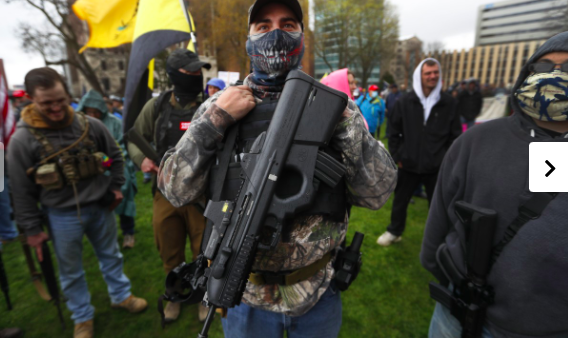
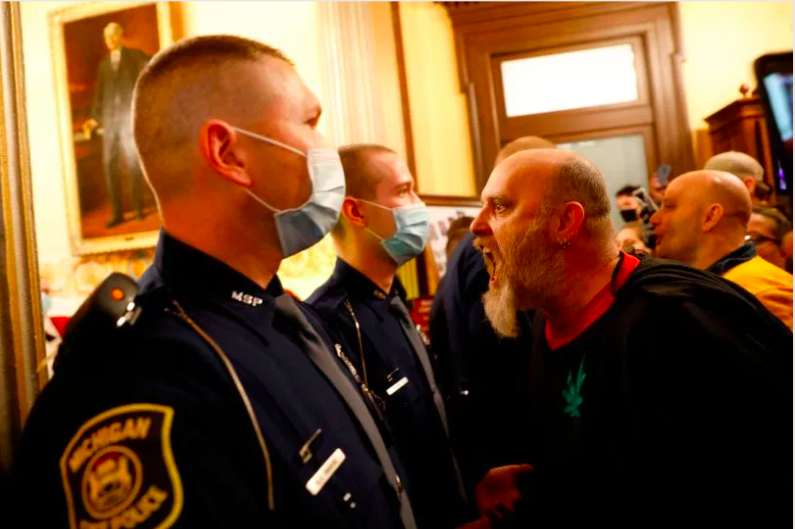
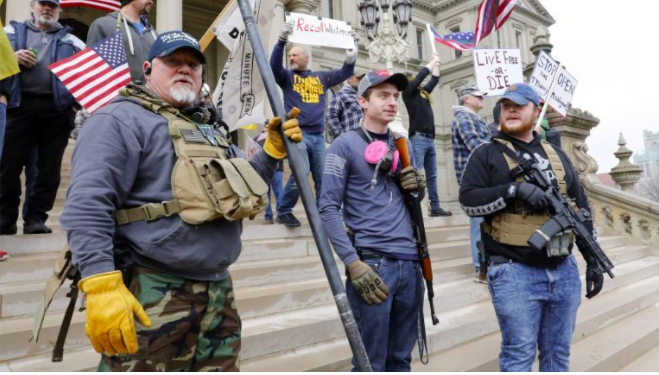
Here is a video from a tweet showing the rage that protesters had towards police at the Michigan State Capital. No tear gas, no riot gear, no billy clubs, no punching. But cops allowed shouting in their faces and swearing and disrespect.
Charlottesville:
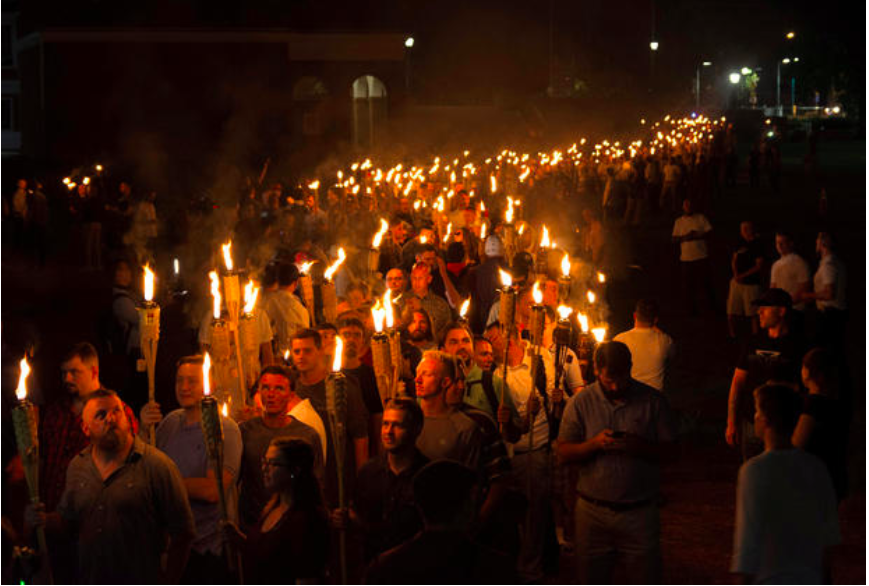
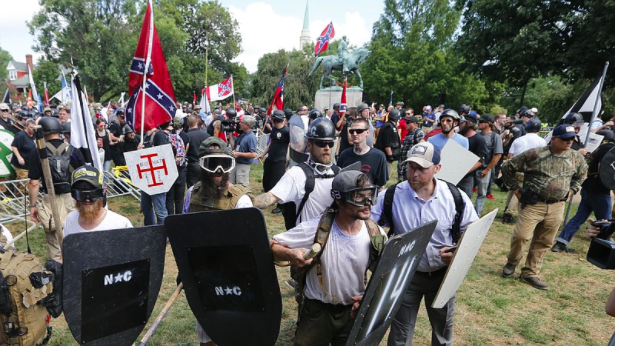

In some cases, the crowd can be sparked to a more extreme attack on institutions like physical damage and vandalism. This might mean destroying police cars or smashing windows. This form of violent protest is usually a result of frustration and feelings of not being heard by a system that people have lost faith in. Personally, I do not like the destruction of public property, however, I understand it. After watching the destruction of so many black lives, how can we not be so enraged that we are willing to destroy inanimate objects to bring attention to the destruction of so many lives?
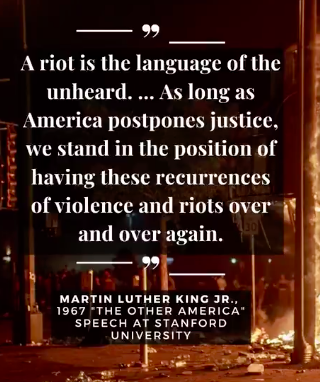
Looting is a distraction
The New Statesmen points out that the violence against property becomes a distractor for much of America to ignore the violence against people that actually sparked the looting and violence against property. This becomes an all-too-familiar cycle that leads to more of the same:
A black American is killed,
the police are met with violent protests,
white America gawks at the violence of the protests, not the violence of the system to which they are responding.
Nothing changes in the system and...
[Another black American]
...the violence of the protests was the second half of the story; the first was the violence against which they were rioting.
“In West Baltimore, some residents see rioting as a rational response to daily despair,” Jenée Desmond-Harris wrote for Vox back in 2015.
Similarly, if the looting of a Target in Minneapolis had happened in a vacuum, then perhaps we could sit around condemning taking something from a Target. But we are not in a vacuum. We are days after a black man was killed by the police in a city where police cannot seem to stop killing black men.
Some people do not support the protesters at all, but they are interested in sowing racial tension. CBS Chicago reported that a man from Galesburg drove up to Minnesota and handed out explosive devices. Then the man planned to go looting in Chicago and potentially start a riot, however, Chicago Police arrested the man. The Sun Times also reported on this incident here.
The DailyMail reports that pallets of bricks seemed to show up near sites of protests.


Also the bricks were reported by Fox News.
Protesters protect property too
There are many people protesting who worked vehemently against the destruction of property.
This CBS report from the protests in Raleigh shows a line of women defending stores while holding signs that read "No Justice No Peace". And protesters in California did the same. And in Brooklyn protesters protected a Target too. These are just a few examples. it would be wrong to lump all looters and protesters together.
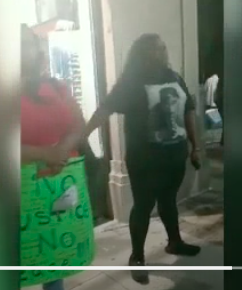
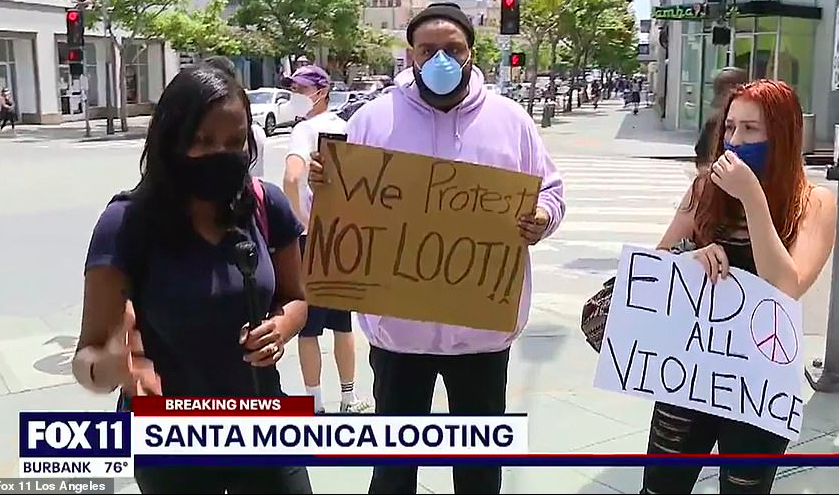
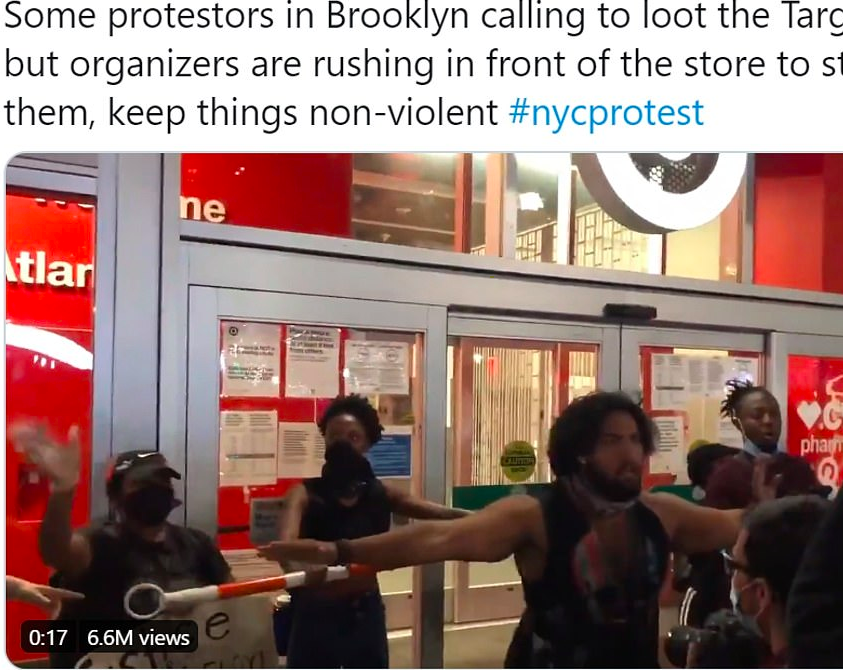
Dailymail reported on a number of incidents all over the country that involved protesters defending property. In one incident in Washington DC, a man was trying to break up the sidewalk to handout bricks to protesters to instigate looting and property damage. But before he could get far, protesters grabbed him and physically carried him to police and told the police to "Take his ass!" In this case, the person trying to destroy the sidewalk and hand out bricks was a white person, which brings on a whole other dynamic.
And some protesters protected police. In Louisville, one police officer got separated from his fellow officers and was surrounded by a hostile crowd. That's when protesters formed a human wall around him to protect him.
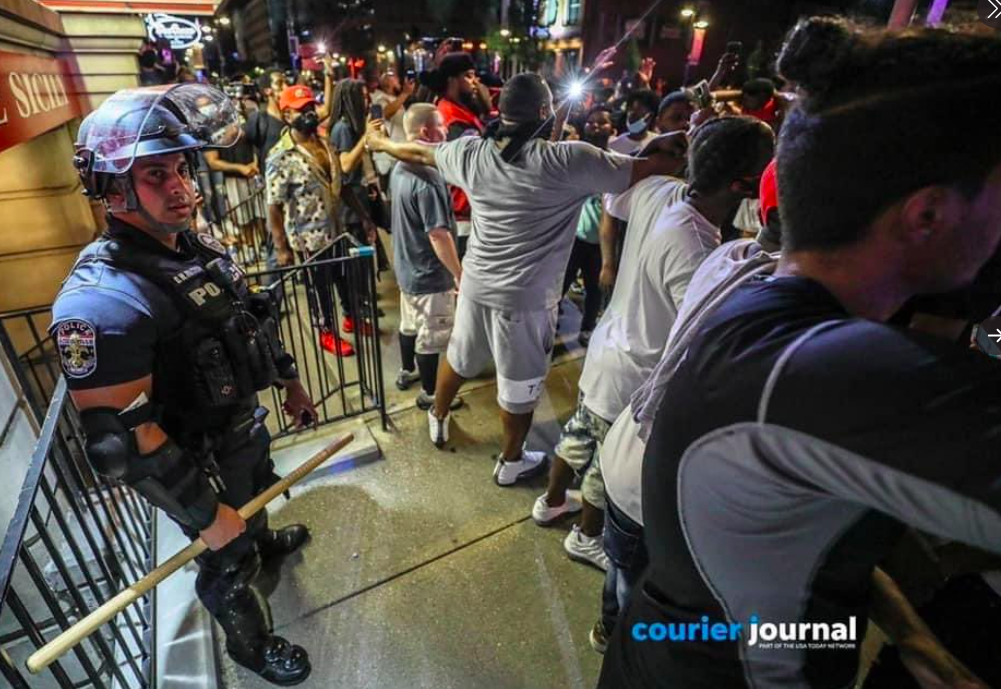
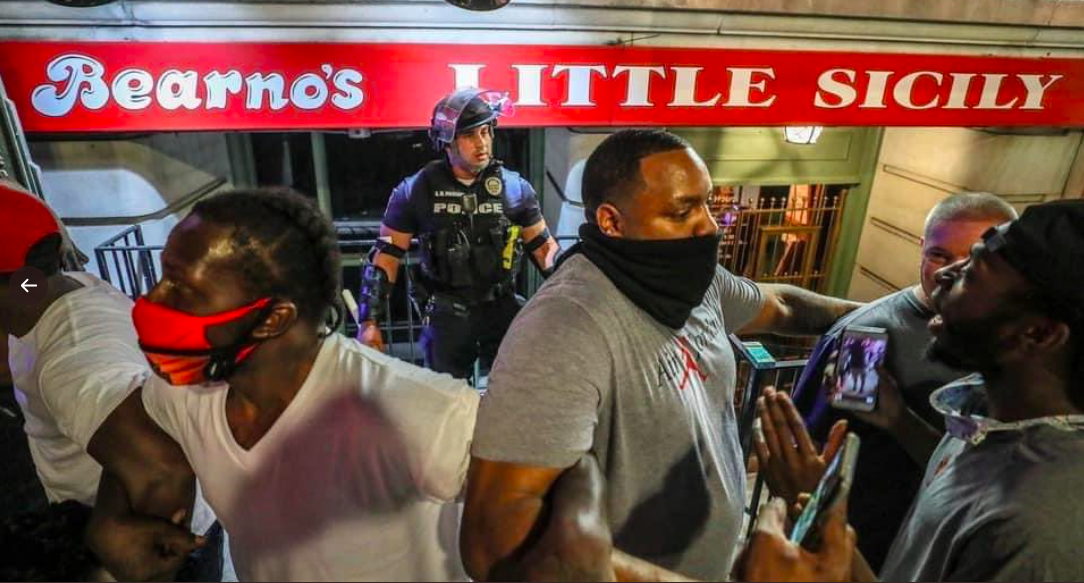
Conversely, some police sympathize with the protesters. This Atlanta policeman stunned protesters and probably prevented tensions from escalating when he sympathized with their frustrations. You can see video of the officer talking to protesters at this link.
Here is a report from the Louisville Courier about a protester and a police officer hugging.

Local NYC news reported on NY Police Officers kneeling with protesters.
CBS News reported on police in Kansas City, MO, Santa Cruz, CA and Camden, NJ all sympathizing with protesters.

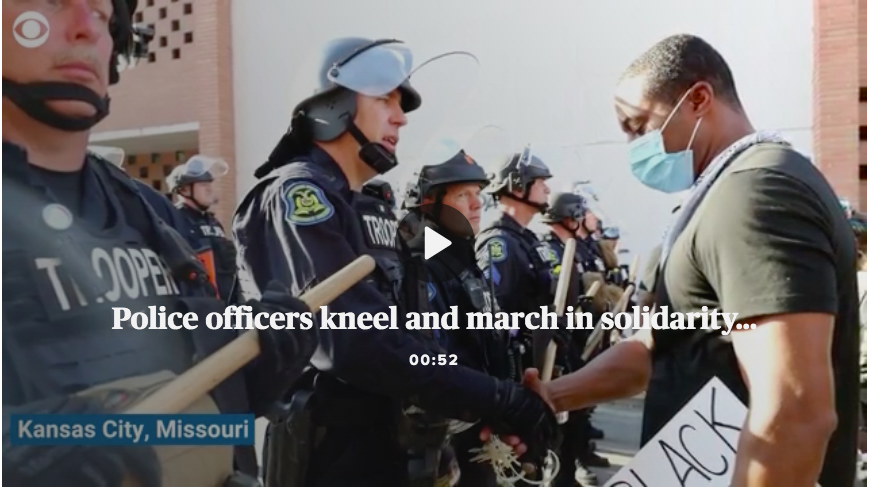
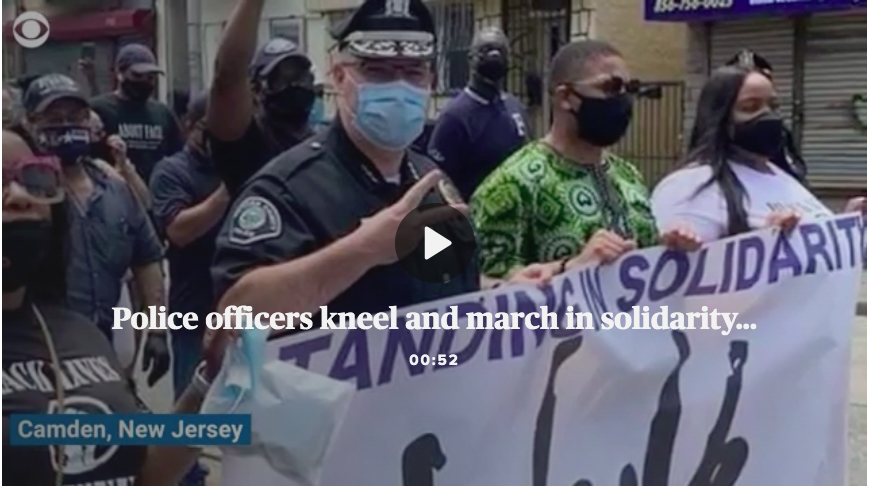
White Protest Privilege
Many whites - some well-intended and others not, participated in the looting. Sadly, it took Americans perceived as black to tell them that the police and the larger public will blame black people for looting. This terrific post from BET shows over a dozen incidents in which people of color had to tell white people to stop looting. In some cases, the POCs explained the white people privilege to them. I like to think that this is a great example that racism and privilege is so deep-rooted in our society that even well-meaning people of privilege don't realize they have it.
In summary, Looting and protesting are not the same. Focusing only on looting is simple-minded and scapegoating and will inevitably lead to more of the same in the future. There are many good police officers who are forced to work within a broken system. Some of these police have shown their sympathy to protesters. And many protesters who went out of their way to protect buildings, stop looting and protect police.
And in fact, looters vary widely:
Some looters are fringe groups who are against the protesters and want to make them look bad (and possibly start a race war),
Some looters are white people who don't understand the repercussions of looting,
Some looters are protesters who were met with violence so they were violent in return,
Some looters have no interest in the protests at all and are simply taking advantage of the situation.
Think critically. Work to identify your own biases. Work to end injustice in the U.S. even when the injustice is not affecting you. Work to end violence.
Other Resources
Racist things Trump has said:
http://fortune.com/2016/06/07/donald-trump-racism-quotes/
Racism from Trump:
http://www.huffingtonpost.com/entry/donald-trump-racist-examples_us_56d47177e4b03260bf777e83
Things Trump has said to incite violence:
http://mashable.com/2016/03/12/trump-rally-incite-violence/#7dyFC5Ojriqt
Map of all of the places Trump has incited hate:
http://americasvoice.org/trumphatemap/
Teachers worry about bullying because of President-elect:
http://www.huffingtonpost.com/entry/trump-effect-4-more-years_us_582394c3e4b0d9ce6fc0a6db?
Medium.com reports racist incidents across the U.S. on day 1 after the election:
https://medium.com/@seanokane/day-1-in-trumps-america-9e4d58381001#.oks4t85dv
Racist incidents on twitter on Day1 after the election:
https://twitter.com/i/moments/796417517157830656
Middle Schoolers chant "build a wall" in their cafeteria:
https://www.buzzfeed.com/mikehayes/middle-schoolers-chant-build-the-wall?utm_term=.xjbYdqYKG#.gxL7on71W
KKK plans to hold a rally to celebrate.
http://www.newsobserver.com/news/politics-government/politics-columns-blogs/under-the-dome/article113915898.html
David Duke, KKK leader continues to support the president elect:
https://www.google.com/amp/amp.usatoday.com/story/93526394/?client=safari
Divergent discourse between protests and counter-protests: #BlackLivesMatter and #AllLivesMatter.
https://www.ncbi.nlm.nih.gov/pubmed/29668754
Since the shooting of Black teenager Michael Brown by White police officer Darren Wilson in Ferguson, Missouri, the protest hashtag #BlackLivesMatter has amplified critiques of extrajudicial killings of Black Americans. In response to #BlackLivesMatter, other Twitter users have adopted #AllLivesMatter, a counter-protest hashtag whose content argues that equal attention should be given to all lives regardless of race. Through a multi-level analysis of over 860,000 tweets, we study how these protests and counter-protests diverge by quantifying aspects of their discourse. We find that #AllLivesMatter facilitates opposition between #BlackLivesMatter and hashtags such as #PoliceLivesMatter and #BlueLivesMatter in such a way that historically echoes the tension between Black protesters and law enforcement. In addition, we show that a significant portion of #AllLivesMatter use stems from hijacking by #BlackLivesMatter advocates. Beyond simply injecting #AllLivesMatter with #BlackLivesMatter content, these hijackers use the hashtag to directly confront the counter-protest notion of "All lives matter." Our findings suggest that Black Lives Matter movement was able to grow, exhibit diverse conversations, and avoid derailment on social media by making discussion of counter-protest opinions a central topic of #AllLivesMatter, rather than the movement itself.
Black Lives Matter or All Lives Matter? Color-blindness and Epistemic Injustice*
Ashley Atkins
Those who take ‘All lives matter’ to oppose ‘Black lives matter’ take the latter to mean something like ‘Only black lives matter.’ Those who regard this exclusionary construal as mistaken hold the error to be due to an ideology of color-blindness. It has further been argued that the ideologically-motivated suppression of racial discourse has resulted in an epistemic injustice, blinding objectors to the fact that ‘Black lives matter’ really means ‘Black lives matter, too’. I will argue that attempts to make sense of this interpretive response in terms of color-blindness are mistaken. As I will discuss, the interpretive debates surrounding the words ‘Black lives matter’ are reminiscent of those surrounding ‘Black Power,’ which unfolded long before color-blindness could be said to have been a prevailing ethos. Critical affirmations such as ‘Black Power’ and ‘Black lives matter’ have proved difficult for many interpreters to understand because of the way that they manifest resistance to white supremacy, eschewing both racial exclusion and racial inclusion (the latter fact being masked by inclusive reconstructions such as ‘Black lives matter, too’). As I argue, however, the critical function of these statements calls into question the applicability of standard accounts of epistemic injustice.
https://www.tandfonline.com/doi/full/10.1080/02691728.2018.1483879
Current CNN ongoing list of controversial police encounters
https://www.cnn.com/2015/04/05/us/controversial-police-encounters-fast-facts/index.html
My blogpost about Black Lives Matter
Bob
Bob is sitting at the dinner table. Everyone else there gets a plate of food except Bob. Bob says, “Bob deserves food.” Everyone at the table responds with, “Everyone deserves food!” and they continue eating. Although everyone deserves food is a true statement, it does nothing to actually rectify the fact that Bob has NO food!
The Doctor
A man goes to the doctor for a broken arm, and the doctor starts examining the rest of the man’s body. The injured man says, “Doc, it’s my arm that’s broken; everything else is fine,” and the doctor responds, “All bones matter.” Of course they all do, but they aren’t the ones broken now!
Jesus
When Jesus said “Blessed are the poor, “no one stood up and yelled “Blessed is everyone!”
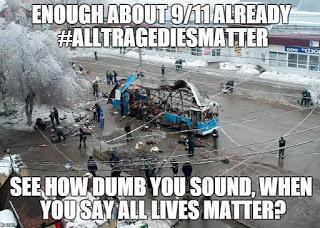
Randall Barnes puts February 2016 into perspective with a detailed analysis of Blackish.
My blogpost about implicit bias:
The Police Officer's Dilemma from University of Colorado at Boulder
Another example of implicit bias is from the University of Chicago's Joshua Corell who showed how people react in a split second when they confront someone with a weapon. Soc Images explains it here. See here for a link to the game and conclusions.
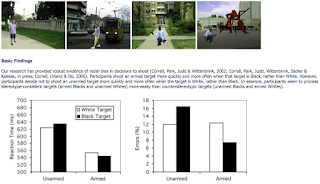
How “Blue Lives Matter” went from a reactive slogan to White House policy
President Trump’s latest executive orders are a show of support for police.
By Dara Linddara@vox.com Feb 9, 2017, 3:50pm EST
https://www.vox.com/policy-and-politics/2017/2/9/14562560/trump-police-black-lives

